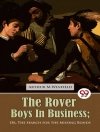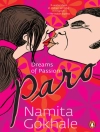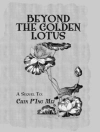In ‘The Making of Americans: Being a History of a Family’s Progress, ‘ Gertrude Stein embarks on a profound exploration of identity and the American experience through the lens of a single family saga. Written in her signature experimental prose, the book eschews conventional narrative structure for a rich tapestry of repetition and cumulative language that captures the essence of personal and cultural evolution over time. Stein situates her work within the context of early 20th-century American modernism, reflecting on themes of continuity, transformation, and the intricate web of familial relationships that illuminate the broader societal changes of the era. Gertrude Stein, a prominent figure of the avant-garde movement, was deeply influenced by her experiences in both Europe and America. Her novel reflects her fascination with the nuances of identity, shaped by her connections to the expatriate artistic community in Paris, and her desire to articulate the complexities of American life. Stein’s keen observational skills, coupled with her innovative approach to language, provide a unique insight into the psyche of a nation and the intricate dynamics of family. Readers seeking a challenging yet rewarding literary experience will find ‘The Making of Americans’ to be an essential work that provokes deep reflection on identity and belonging. As much a philosophical treatise as a narrative, this book offers timeless insights into the American condition, making it a recommended read for anyone interested in literature, history, and the evolution of cultural identity.
Sobre o autor
Gertrude Stein (1874–1946) was an avant-garde American writer, poet, and art collector who resided mainly in Paris from 1903 until her death. Hailing from a well-off Jewish family, Stein attended Radcliffe College, where she studied psychology under the tutelage of William James. She later went to Johns Hopkins University to study medicine but did not obtain a degree. Stein’s body of work includes writing that is often characterized by its playful use of language, innovative approach to narrative structure, and disregard for conventional punctuation, preferring instead a style that gives primacy to the rhythm and cadence of the prose. Stein’s seminal work, ‘The Making of Americans’ (1925), which presents a family saga, is a formidable text that encompasses her preoccupation with the complexities of identity, her interest in the ordinary lives of people, and her philosophical musings on the nature of existence and national character. This novel, often considered her most challenging due to its length and experimental form, exemplifies her narrative method, typified by repetition and a stream-of-consciousness technique. A central figure of the Parisian avant-garde and a mentor to aspiring writers, Stein’s salon was frequented by luminaries such as Ernest Hemingway, F. Scott Fitzgerald, and Pablo Picasso, strongly influencing the course of modernist literature and art.












